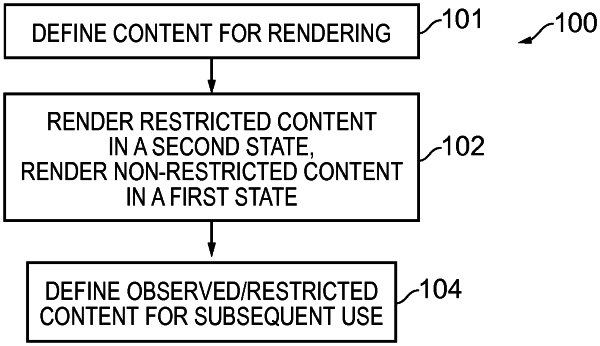| CPC G06F 3/013 (2013.01) [G02B 27/017 (2013.01); G06F 3/012 (2013.01); G06T 19/006 (2013.01); G02B 2027/0138 (2013.01); G02B 2027/0141 (2013.01); G06F 3/011 (2013.01)] | 18 Claims |

|
1. An apparatus comprising:
at least one processor; and
at least one memory comprising computer program code, the at least one memory and the computer program code configured to, with the at least one processor, cause the apparatus to perform at least the following:
render for a user, in a first state, a first portion of content for rendering that is not defined as restricted content and render simultaneously, in a second state, different to the first state, a second portion of the content for rendering that is defined as restricted content, wherein the second portion of the content is rendered in the second state based on having been previously observed by the user a predefined number of times during a particular time slice of the content or having been previously observed by the user for a predefined cumulative viewing time during the particular time slice of the content;
wherein the restricted content comprises only a portion of all rendered content;
wherein the second state in which the second portion of the content is rendered provides for persistently obscuring, removing, de-focusing, blurring, rendering at a lower volume, muting or otherwise modifying the second portion of the content, while the content is subsequently viewed during the particular time slice, to contain less information relative to the first portion of the content; and
use a combination of a user perception direction and an observation field of perception to define restricted content.
|